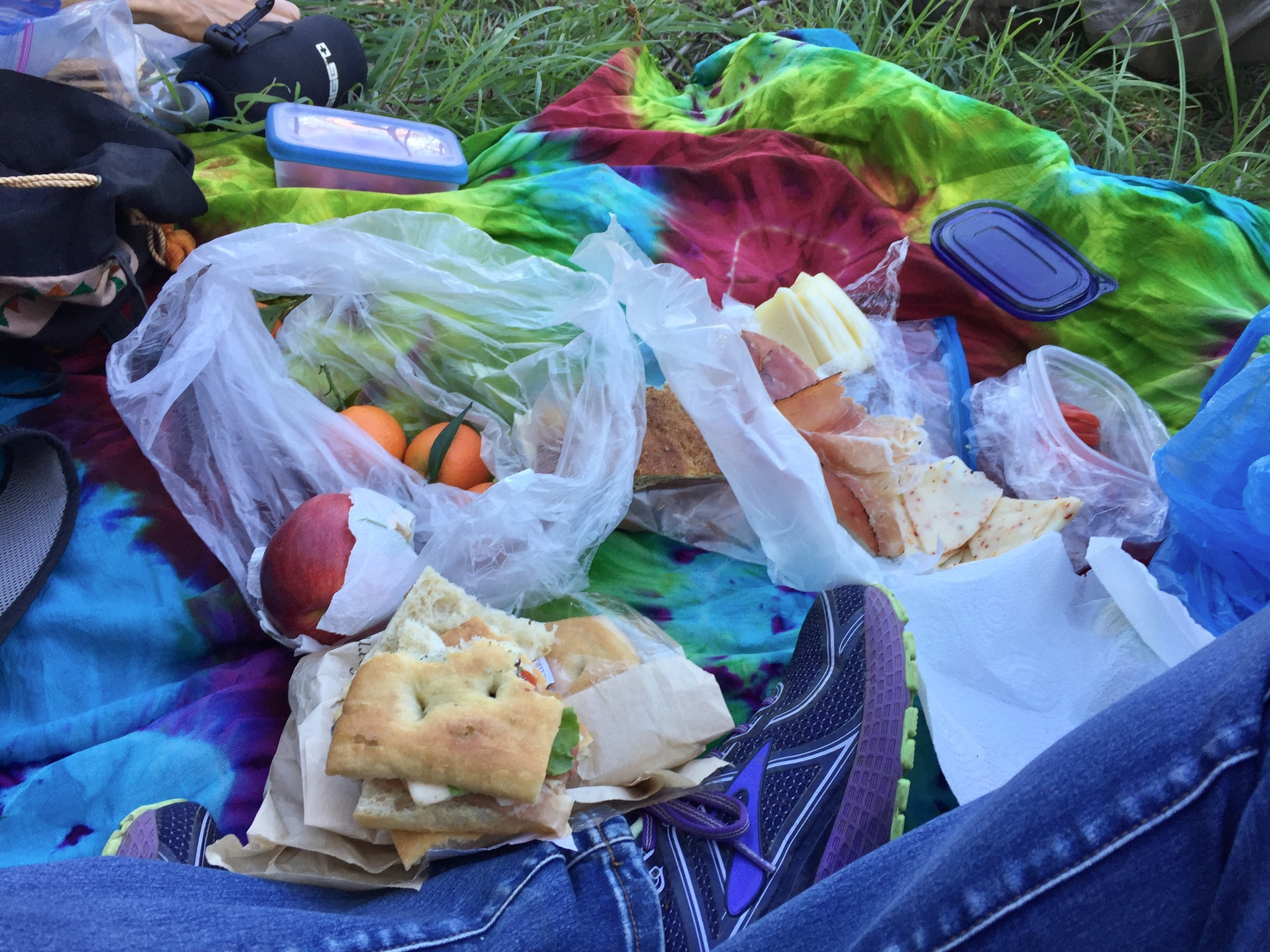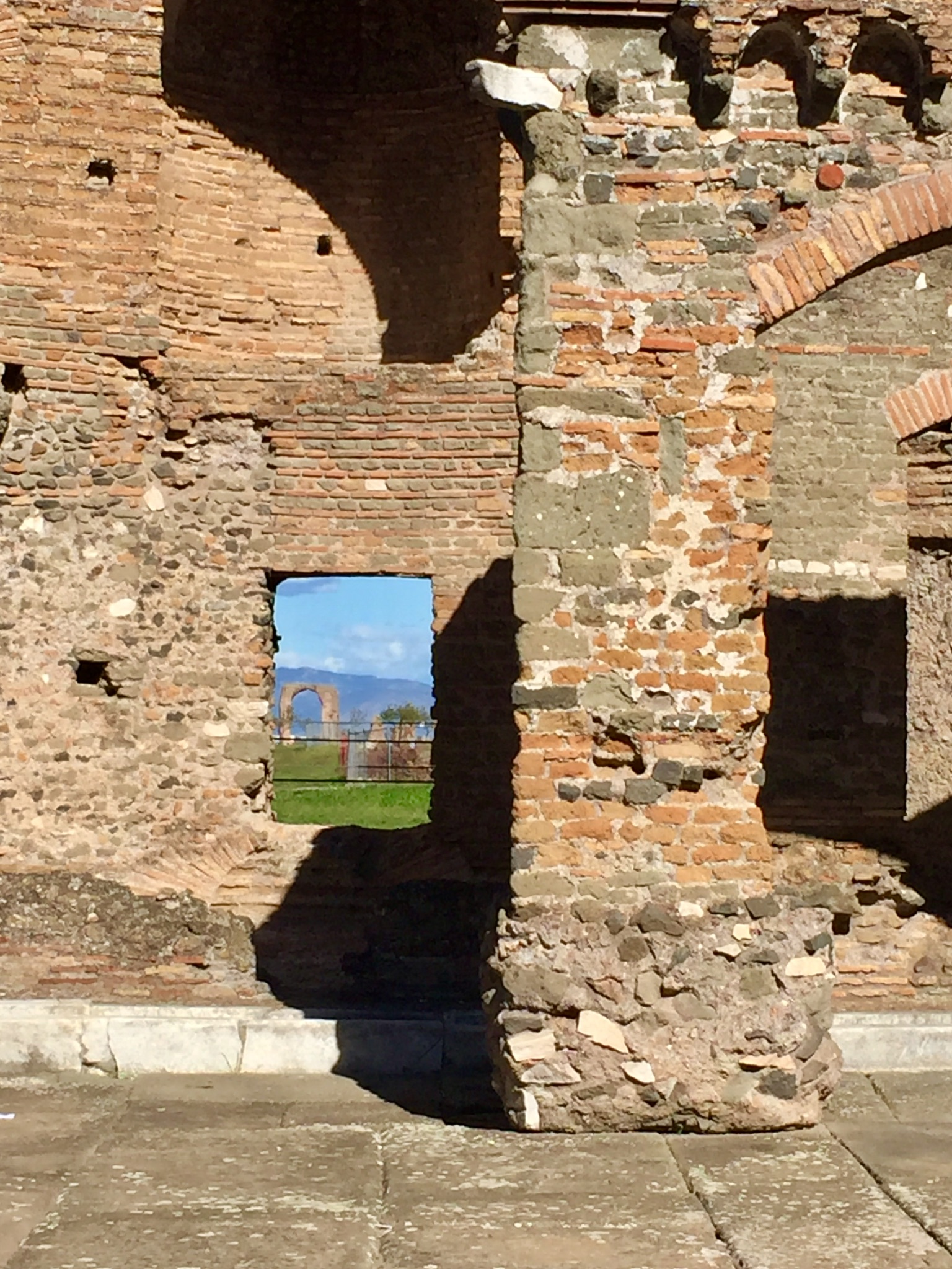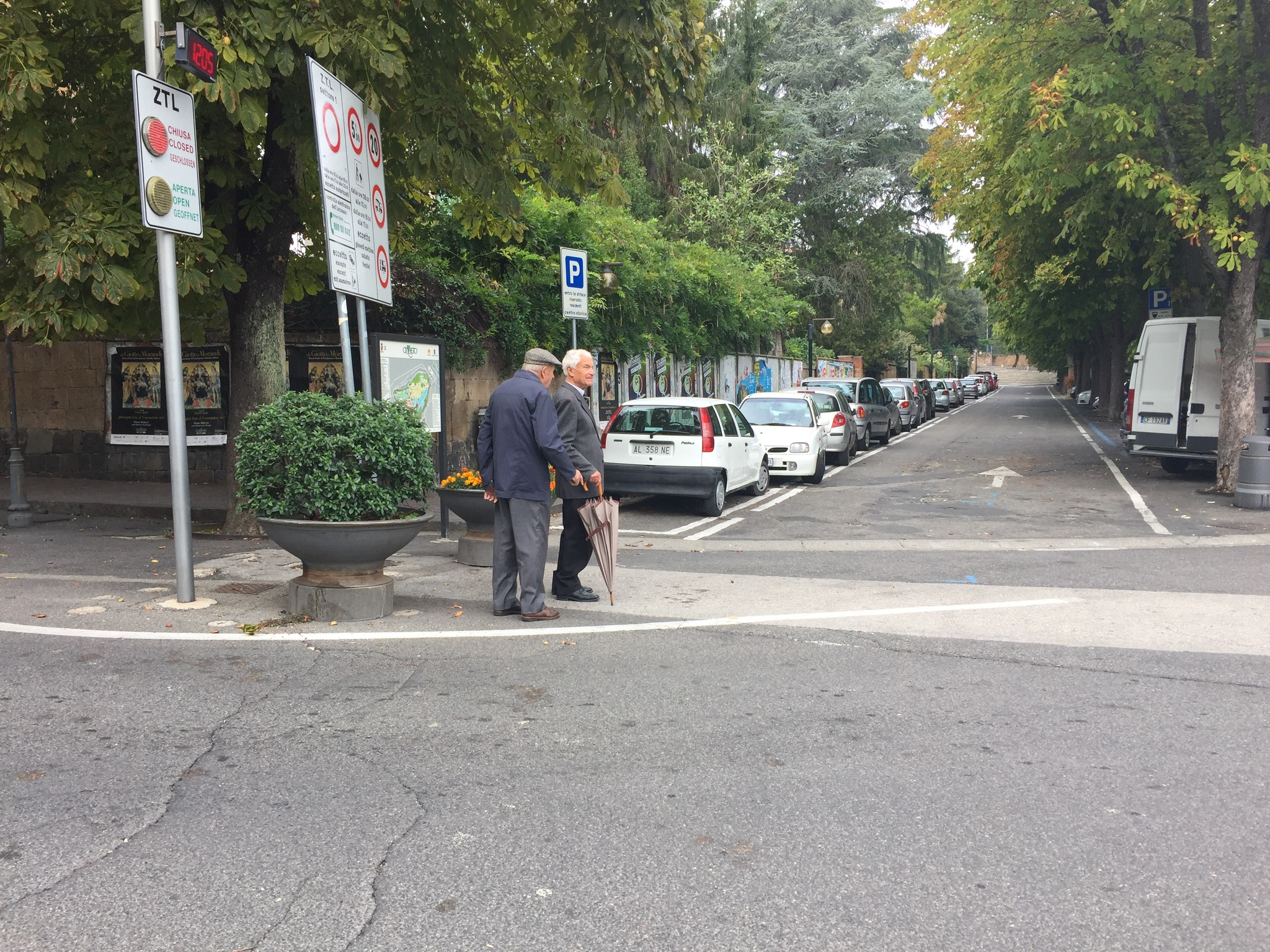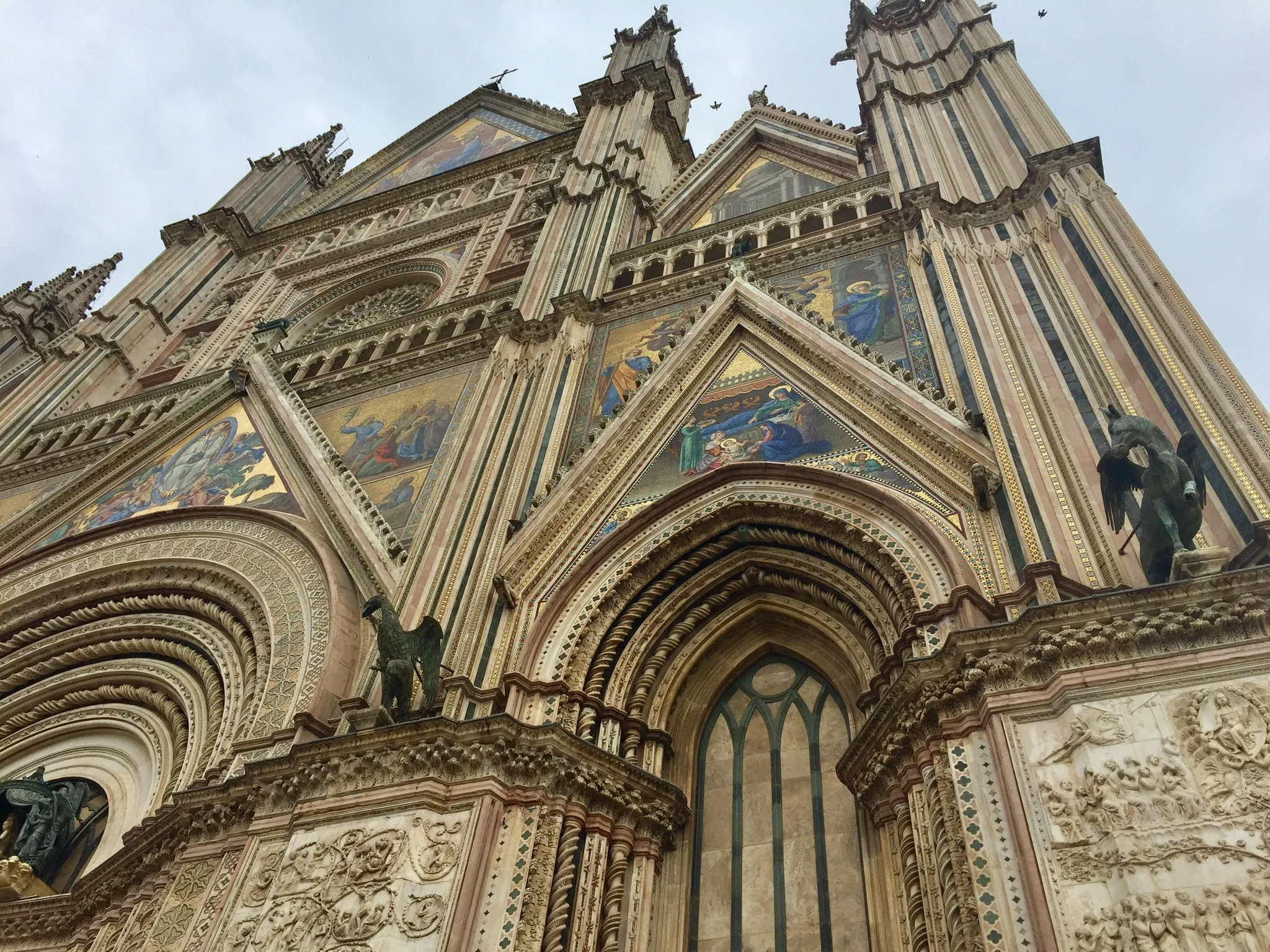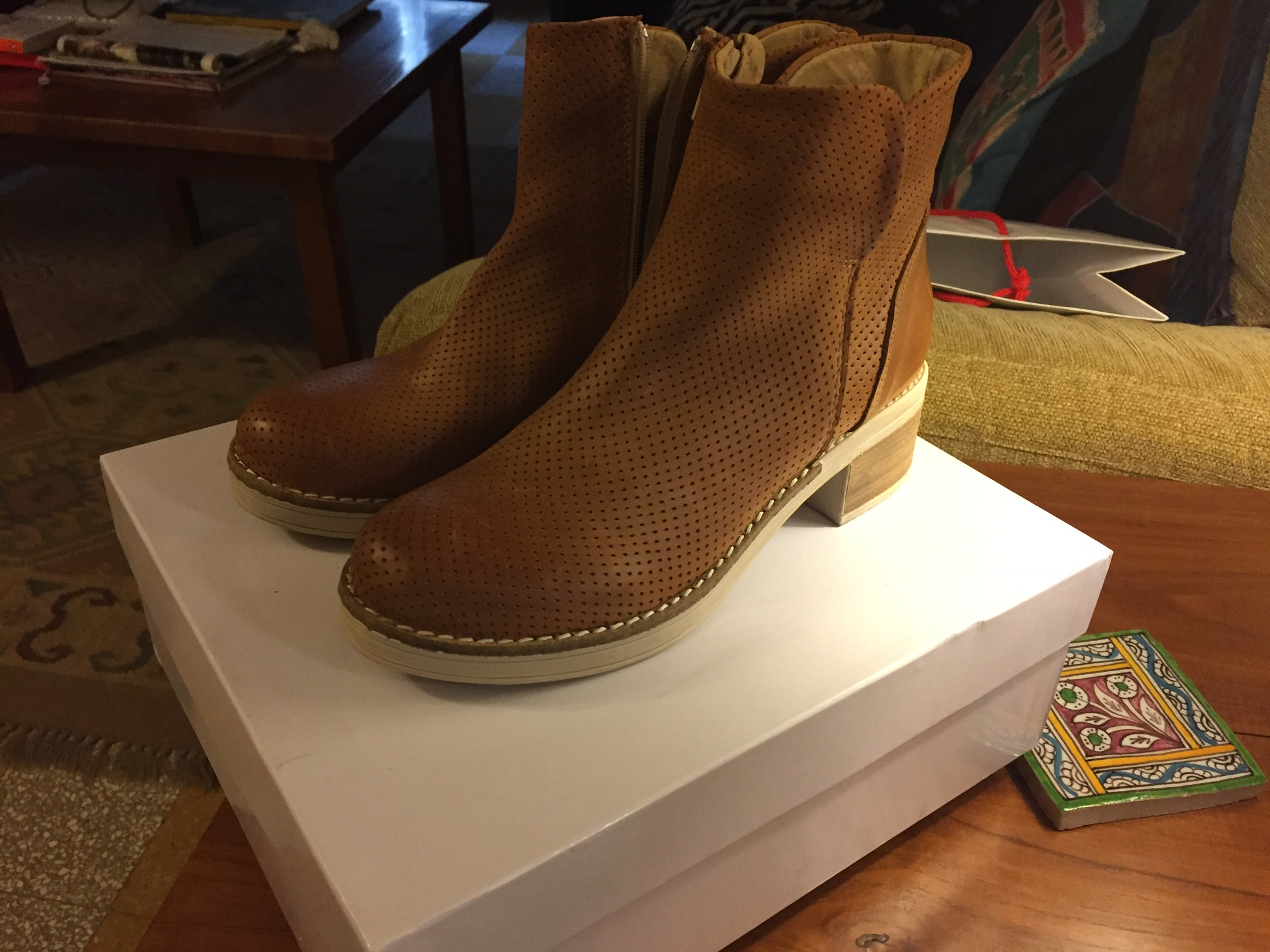Many of you know that between Rome and Florence to the north lies Orvieto, a hilltop village so quaint and charming that few can resist visiting it. What’s great about traveling in September here is that the weather is delightful and the throng of travelers has lessened. So what do the two Kepple girls do on a September Sunday in Rome? Hop a train for the 75-minute ride north to Orvieto.
The weather report warned of light rain and cooler temps, so we were prepared, each of us with a light backpack stuffed with what we might need--water, Kind bars, extra sweater, umbrella, and a power charger, just in case my phone needed a boost.
What follows here are the photos of the day--from the train ride past other hilltop villages to the fabulous 3-course lunch, the majestic Duomo, the underground cave tour, and finally the wine tasting of four delectable Orvieto wines.
Orvieto was little damaged by the tumult of WWII, so the town captivates visitors with 13th century delight. With no more room at the top of the volcanic rock it's built on, the town has overflowed to the valley below, but this area is unappealing and we totally ignored it. Instead, once we arrived in Orvieto, we paid 1,30 euros for a 3-minute funicular ride up to a wonderful view and town.
I realize on days like this that it’s so good Anne and I walk at a similar pace--that is, we trek together quite quickly or simply saunter when a sight or panorama intrigues us. So it was in Orvieto. Initially the panorama captivated us, then the small shops and even the myriad cats lolly-gagging throughout the town (some wanting attention) made us smile.
The Duomo, however, is the centerpiece of the place as the photos show. But I also loved the alleys (one adorned with wooden animals and wall art), the minute shops, and interesting people milling about. We heard more American English spoken here than in Rome itself, and we took an English-narrated tour of the caves beneath the town.
Let me just say a bit about the caves--the volcanic tufo (actually from the same volcano that covered Pompeii) on which the town is built, allowed for each home to hand-dig its own underground cave for purposes varying from olive oil production and storage, to pigeon-nesting, to even WWII shelters. A cave’s purpose varied according to its location. Those on the north side of the city with no outside access were perfect for wine storage, as the temperature did not vary. Those in the south with outside access housed pigeons for food, and those caves large enough for olive presses, produced and stored oil for the city. In this way the townspeople worked together providing all that was needed.
Light sprinkles fell in the afternoon, but following the cave tour, we took shelter under an umbrella to sip wine. I noticed my phone needed recharging and felt pretty proud of myself for packing an additional charger--only to realize I’d left the cord for it at the apartment. Just another reminder that often the joke is on you. Just shake your head, smile, and move on...
A wonderful day trip for us--more adventures will follow!


























